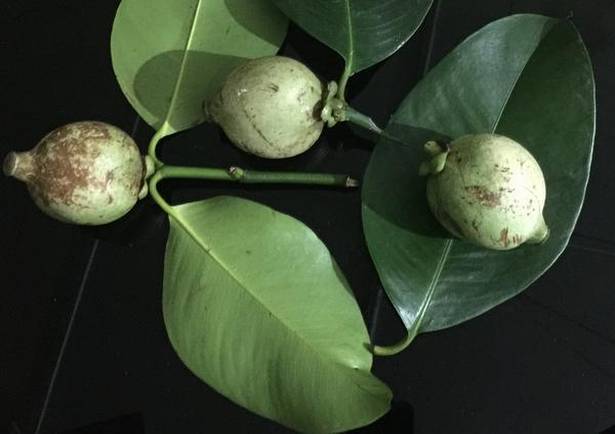Monkeys poops “rotten” but potentially nutrient-rich fruit tree for the world of science
People near the 900.03-hectare Dulang Reserve Forest in the State’s Lakhimpur district (India) avoid the gela thekera unlike similar sour fruits used in a variety of traditional dishes such as chutney. Gela in Assamese means putrid, spoilt, or rotten.
However, monkeys relish the bitterish sour wild fruit that people find repulsive.
An Assam Forest Department officer and 3 scientists have found that monkeys are essential to the propagation and survival of the gela thekera they named Garcinia sibeswarii, a new species to science.
“The fruit is seldom consumed by the local people. But primates such as the rhesus macaque and the rare Assamese macaque in the reserve forest devour the fruits at maturity”, southern Assam circle’s Chief Conservator of Forest Jatindra Sarma said.
He is also one of the authors of the study on Garcinia sibeswarii, named after his father Sibeswar Sarma, published in the latest edition of the New Zealand-based journal Phytotaxa. The other authors are Peerumuhammed Subaida Shameer and Narayanan Nair Mohanan of Thiruvananthapuram’s Jawaharlal Nehru Tropical Botanic Garden, and Ajima Begum of New Delhi’s National Institute of Plant Genome Research.
“The natural regeneration of Garcinia sibeswarii is primarily from the feces of the primates as the seeds of the fruit the monkeys feast on remain undigested”, Mr. Sarma, who studied the plant during his stint with the Forest Department’s northern Assam circle, explained.
The genus Garcinia is represented in India by 44 species and 5 varieties, all except 6 species occurring in the wild. The northeast, comprising eight States, hosts 17 of these species, of which two are endemic.
The researchers had during a February trip to Dulang found 500 Garcinia sibeswarii plants ranging from saplings to mid-sized trees. The plant is dioecious (having the male and female reproductive organs in separate individuals), evergreen, and grows up to 10 meters in height. Dulang is a semi-evergreen forest at elevations from 100 to 300 meters above mean sea level.
“This new species is allied to Garcinia celebica that is central to Malesia (region straddling the Equator and the boundaries of the Indo-Malayan and Australasian realms). It is a potential candidate for crop improvement programs of the Garcinia species”, Mr. Sarma said.
Garcinia is an important source of the anti-obesity phytochemical hydroxy citric acid, kokum butter, oleoresins, essential oils, and food color.
Scientists at a laboratory in Assam have started the scientific validation of Garcinia sibeswarii for analysing its properties, including medicinal values.
Source thehindu.com

